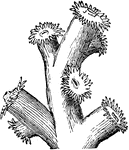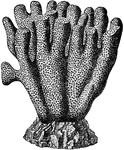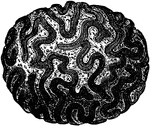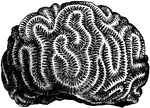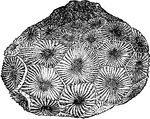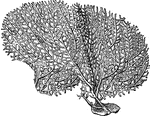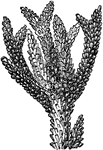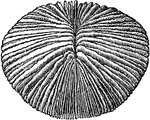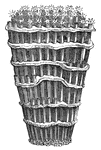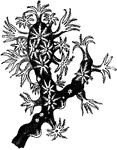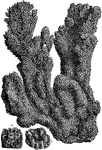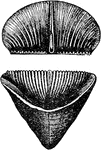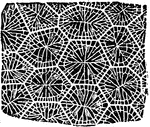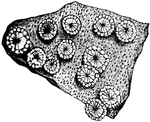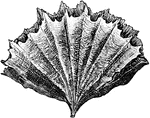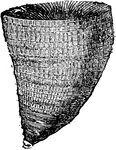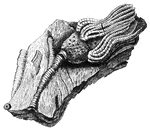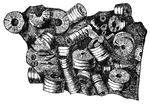The Corals and Sea Anemone ClipArt gallery provides 241 images of corals and sea anemone in the phylum cnidaria. They attach themselves to the bottom using an adhesive 'foot', called a basal disc.
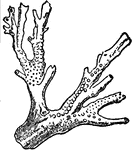
Coral
Corals are marine organisms from the class Anthozoa and exist as small sea anemone-like polyps, typically…

Coral
Corals are marine organisms from the class Anthozoa and exist as small sea anemone–like polyps,…
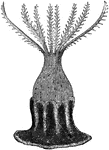
Coral
An illustration of coral. Corals are marine organisms from the class Anthozoa and exist as small sea…

Coral Head
Compound coral head with polyps partly expanded and partly contracted. The expanded polyps show the…
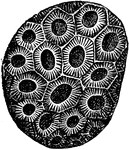
Coral Head
A compound coral head with crowded prismatic corallites. The specimen represents a worn pebble, formerly…
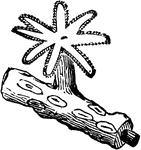
Coral Polyp
"Part of a branch of a coral of the genus Gorgonia, showing one of the polyps expanded." -Dana, 1883
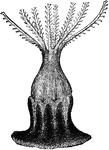
Coral Polyp (Lacaze-Duthiers)
"The polyp itself is formed of a whitish, membranous tube, nearly cylindrical, having an upper disk,…
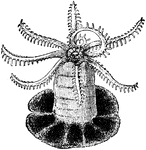
Coral Polyp (Lacaze-Duthiers)
"The arms of the polyps are at times subject to violent agitation, and the tentacula become much excited.…
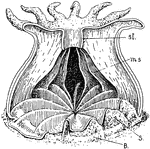
Coral Shell
"The formation of a coral shell (Asteroides). st., Stomodaeum; ms., mesentery; s., calcareous septum;…

Coral Stages
"Life history of a coral, Monoxenia darwinii. A, B, Ovum. C, Division into two. D, four-cell stage.…
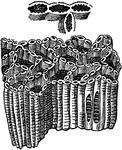
Chain Coral
The chain coral. This is an important index fossil of the Silurian, and an important limestone builder…
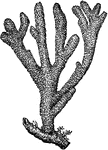
Cold-water Coral
Lophelia pertusa is a species of cold-water coral which grows in the deep waters throughout the North…
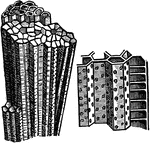
Compound Coral
A characteristic a-separate compound coral. The columns are prismatic and their walls pierced by regular…
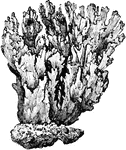
Fire Coral
Fire corals are colonial marine organisms that look rather like real coral. However they are technically…

Fossil Coral
Favosites alcyonaria is a species of fossil corals from the Silurian, Devonian, and Carboniferous strata.

Madrepore Coral
Madrepore ("mother of pores") is a coral of the genus Madrepora, found often forming reefs or islands…

Madrepore Coral
Madrepore ("mother of pores") is a coral of the genus Madrepora, found often forming reefs or islands…
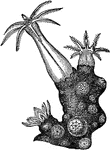
Precious Coral
An illustration of part of a stock of precious coral (red coral). Precious coral or red coral is the…

Red Coral
Used for jewellery, grows in a bushy form on rocks at the bottom of the Mediterranean and Red seas.
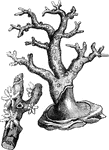
Red coral
"It appears to be confined to the Mediterranean Sea, where it grows, especially on the southern coast,…
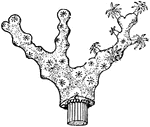
Corallium Rubrum
"Portion of a colony of Corallium rubrum, showing expanded and contracted zooids. In the lower part…
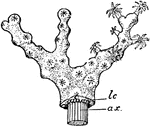
Colony of Collarium Rubrum
"Portion of a colony of Corallium rubrum, showing expanded and contracted zooids. In the lower…
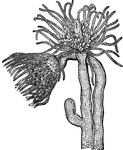
Tubularia coronata
"The Tubularidae are a family of hydroid polypes are for the most part social animals, frequently possessing…

Corymorpha
"A, a hydriform person giving rise to medusiform persons by budding from the margin of the disc; B,…
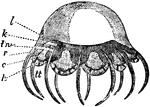
Cunina Rhododactyla
"Cunina rhododactyla, one of the Narcomedusae. c, circular canal; h, "otoporpae" (ear-rivets) or centripetal…

Cunina Rhododactyla
"Diagram of a vertical section through a young Cunina rhododactyla, passing on the right side through…
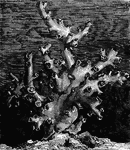
Dendrophyllia Ramea (De Blainville)
"The Madrepores abound in all inter-tropical seas, taking a considerable part in the formation of the…
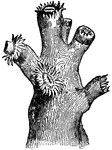
Dendrophyllia Ramea with Polypi (De Blainville)
"The Madrepores abound in all inter-tropical seas, taking a considerable part in the formation of the…
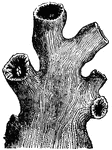
Dendrophyllia Ramea, Magnified (De Blainville)
"The Madrepores abound in all inter-tropical seas, taking a considerable part in the formation of the…

Diblastula
"Diagram of a Diblastula. a, orifice of invagination (blastopore); b, archenteric cavity; c, endoderm;…

Diblastula
"Formation of the Diblastula of Eucope (one of the Calyptoblastic Hydromedusae) by delamination. A,…

Dicoryne
"Diagram of a colony of dicoryne, showing three forms of persons. a, normal hydriform person; b, modified…

Doliolum Mulleri
"'Nurse' of Doliolum mulleri. I., Inhalant, E., exhalant aperture; C., ciliated band round pharynx (P.);…

Doliolum Mulleri
"Sexual individual of Doliolum mulleri. G., gonads; B., gill-slits; I., Inhalant, E., exhalant aperture;…
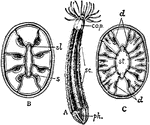
Edwardsia Cliparedii
"A, Edwardsia cliparedii (after A. Andres). Cap, capitulum; sc, scapus; ph, physa. B, Transverse section…
